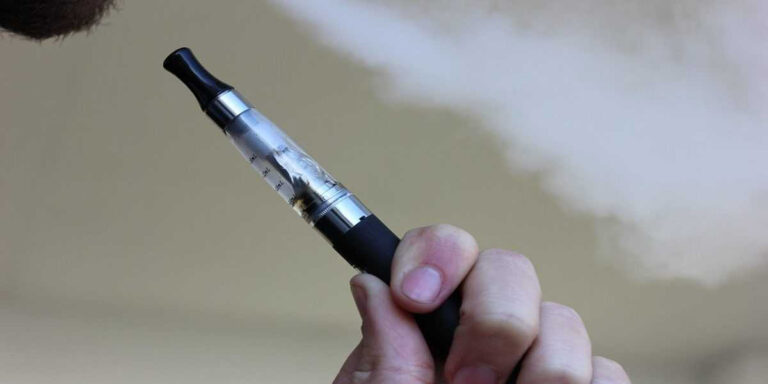In a significant move aimed at tightening controls over electronic cigarettes (e-cigarettes), Australia has implemented the “Therapeutic Goods and Other Legislation Amendment (E-Cigarette Reform) Act 2024” as of July 1st. These regulations, overseen by the Therapeutic Goods Administration (TGA), bring forth stringent measures impacting the sale, distribution, and advertising of e-cigarettes across the country.
Overview of New Regulations
The amendments introduced under the Therapeutic Goods Act mark a pivotal shift in how e-cigarettes are regulated in Australia. Key provisions include restrictions on sales, prescription requirements, strict guidelines for advertising, and enhanced importation standards. These measures are part of a phased approach to align Australia’s regulatory framework with evolving public health concerns and international best practices.
Regulatory Phases and Dates
The implementation of the new regulations unfolds across several phases:
- Immediate Changes: Non-pharmacy retailers, including vape shops and convenience stores, are barred from selling e-cigarettes of any type.
- Prescription Requirements: Until September 30, 2024, e-cigarettes, whether containing nicotine or not, require a prescription for purchase from a doctor or nurse practitioner.
- Advertising Restrictions: Stringent limitations on e-cigarette advertising across all media platforms unless explicitly authorized.
- Importation Standards: Enhanced requirements for importers and sponsors, including adherence to specific product standards and obtaining necessary licenses.
Restrictions on Sales
One of the most notable changes is the prohibition of e-cigarette sales by non-pharmacy retailers. This includes all businesses outside of pharmacy settings, such as tobacco shops and dedicated vape stores. The aim is to limit access to e-cigarettes to environments where clinical oversight and appropriate guidance can be provided.
Prescription Requirements
Until September 30, 2024, obtaining e-cigarettes will require a prescription from a healthcare professional. This measure aims to regulate access and ensure that users receive proper medical advice on the risks and benefits associated with vaping.
Advertising and Promotion
Under the new regulations, any form of advertising or promotion of e-cigarettes is strictly prohibited unless explicitly authorized. This includes restrictions on traditional advertising channels such as television, print media, and online platforms. Authorized promotion channels will be tightly regulated to ensure compliance with public health objectives.
Importation and Product Standards
Importers and sponsors of e-cigarettes must adhere to stringent standards set by the TGA. This includes obtaining import licenses, complying with product-specific regulations, and ensuring that all imported products meet Australian therapeutic goods standards. These standards are crucial in safeguarding consumer safety and product quality.
Therapeutic E-Cigarettes
For e-cigarettes classified as therapeutic goods, such as those designed to aid in smoking cessation, additional regulations apply. These include limits on nicotine concentration in products available without a prescription and requirements for plain packaging to discourage appeal to minors.
Impact on Vaping Community
The new regulations have sparked varied reactions within the vaping community and among stakeholders. While some applaud the measures as necessary steps to protect public health, others express concerns about access and potential impacts on smokers looking to transition away from traditional cigarettes.
Health Considerations
Research indicates both potential benefits and risks associated with e-cigarettes. While they may offer a less harmful alternative to smoking traditional cigarettes by eliminating tar, concerns remain about the long-term health effects of inhaling aerosols and the risk of nicotine addiction, especially among youth.
Enforcement and Compliance
The TGA will play a crucial role in enforcing these regulations, with penalties for non-compliance expected to be strictly enforced. This includes monitoring importation, distribution channels, and ensuring that all advertising adheres to authorized guidelines.
Future Regulatory Developments
Further updates to the regulatory framework are anticipated, particularly concerning therapeutic e-cigarettes. These may include adjustments to nicotine concentration limits, additional packaging requirements, and ongoing consultation with stakeholders to refine and enhance existing measures.
Support for Smoking Cessation
While e-cigarettes can play a role in smoking cessation strategies, they are not considered a primary method for quitting. Health professionals recommend exploring other proven methods and support systems tailored to individual needs for those seeking to quit smoking.
FAQs
Can I still buy e-cigarettes from a vape shop?
No, non-pharmacy retailers are prohibited from selling e-cigarettes under the new regulations.
Do I need a prescription to buy e-cigarettes?
Yes, until September 30, 2024, you must obtain a prescription from a doctor or nurse practitioner to purchase e-cigarettes in Australia.
What are the penalties for violating these regulations?
Penalties for non-compliance include fines and other regulatory actions imposed by the TGA.
Will these regulations affect therapeutic e-cigarettes differently?
Yes, therapeutic e-cigarettes will have specific guidelines on nicotine concentration and packaging to align with clinical standards.
How will these regulations impact advertising of e-cigarettes?
Advertising of e-cigarettes will be strictly limited to authorized channels and subject to stringent guidelines to protect public health.
Are there plans for further tightening of these regulations?
Yes, future developments may include adjustments to nicotine limits and packaging requirements based on ongoing research and consultation.


















